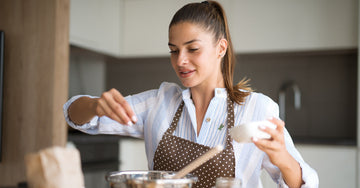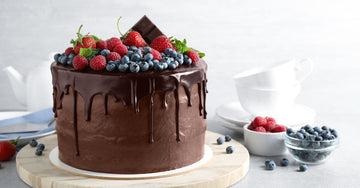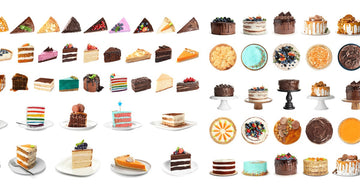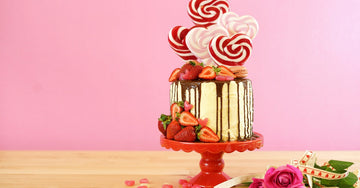Baking is an art, a science, and often, a comforting and creative hobby. For many, it can feel intimidating at the start. Flour dusting the counters, recipe terminology that sounds unfamiliar, and the fear of making mistakes can all be daunting as you try a new recipe.
But don’t worry, every seasoned baker has been in your shoes! This ultimate guide for first-time bakers is crafted to simplify the process, equip you with the essentials, and build your confidence as you step into the world of whisking, folding, and baking. By the end, you’ll feel ready to experiment further and enjoy the satisfaction of creating something delicious from scratch.
The Tools Every Beginner Baker Needs
Starting your baking adventure doesn’t have to include splurging on expensive gadgets or filling your cupboards with countless tools. There are, however, a few essentials you’ll need to create a strong foundation.
Measuring cups and spoons are crucial for accuracy since you can’t just eyeball ingredients in baking like you might be able to get away with in cooking. Additionally, a good mixing bowl set will come in handy for combining ingredients, and a sturdy whisk and a spatula can work wonders for whisking batters and scraping every last bit of dough. Don’t forget a reliable baking tray and loaf pan. You’ll use these for cookies, cakes, and more.
A hand or stand mixer isn’t mandatory but will make your life a lot easier if you’re dealing with thick batters or whipping cream. A non-stick rolling pin and parchment paper are also useful down the line, especially if you want to roll out dough for pie crusts or cookies. With these basics, you’ll be well-prepared to tackle most beginner recipes.
Understanding the Building Blocks of Recipes

To successfully bake, you need to understand the purpose of your ingredients and how they interact. Flour forms the structure of your baked goods. Different flours, such as all-purpose, bread, and cake flour, serve different purposes, so make sure you pick the right one for the recipe. Sugar, in addition to adding sweetness, helps with caramelization and moisture retention, which is why baked goods can stay soft and tender for longer.
Eggs play the role of binding, providing structure, and supporting leavening, while butter or oil adds moisture and richness. Baking powder, baking soda, and yeast are leavening agents that make your cakes and breads rise. Salt might seem insignificant in a sweet treat, but it enhances flavors and balances sweetness.
The fresher your ingredients, the better the outcome. Always check the packaging dates on baking powder and yeast, as they can lose their effectiveness over time. Finally, always pay close attention to ingredient preparation in recipes. If your eggs or butter need to be at room temperature, plan ahead so you don’t have to delay your baking.
Mastering Basic Baking Techniques
Baking success often comes down to technique. Measuring correctly is one of the most critical steps. Ensure you use dry measuring cups for dry ingredients and liquid measuring cups for liquids. Level off the top of dry ingredients with a knife to avoid using too much and always measure your liquids at eye level for accuracy.
When it comes to mixing, not all recipes are the same. Some will ask you to cream butter and sugar until fluffy, while others may require gentle folding to incorporate beaten egg whites without deflating them. Always read through the recipe beforehand so you understand what’s expected. Finally, using an oven thermometer is non-negotiable. Starting with the right temperature ensures even baking, which is crucial for achieving the expected texture and rise.
Start Simple with Classic Recipes

When you’re just starting, choose easy recipes that help you master fundamental techniques. Chocolate chip cookies, for instance, are a must-try since they teach you how ingredients like butter, eggs, and leavening agents work together to create chewy, soft textures.
Frosted cupcakes are another excellent choice, helping you practice portioning batter and working with frosting for decoration. Simple cakes are also versatile and suitable for a beginner’s skill set. The aim here is to build your confidence while producing baked goods that show immediate results and bring smiles to everyone who tastes them.
Learning to Troubleshoot Common Mistakes
Mistakes are part of the learning process in baking. One of the most important things for first-time bakers to know is how to learn from mistakes and prevent them in the future.
Undercooked treats often mean you didn’t bake them for long enough or your oven temperature was inconsistent. Using an oven thermometer can help you ensure accuracy. On the other hand, dry cakes and muffins might point to an overextended bake time or too much flour. If your cake comes out dense, it might be because you overmixed the batter, removing trapped air and creating a mixture that is heavy and dense.
Always follow the recipe closely, and don’t hesitate to troubleshoot if results aren’t as expected.
Baking Kits Are Perfect for Beginners
If the thought of assembling the right ingredients and figuring out measurements feels overwhelming, baking kits might be the perfect solution for you. These kits come with pre-measured ingredients and easy-to-follow instructions, making them foolproof for first-time bakers. They take the guesswork out of the process, allowing you to focus on learning techniques and enjoying the experience.
Not only do baking kits save time, but they also help reduce waste by providing just the amount you need—no need to buy a whole bag of something you might not use regularly. Many kits also introduce unique recipes that can excite your taste buds and inspire you to try new things. These kits are a fantastic way to ease into baking while gaining confidence.
Moving Beyond the Basics
Once you’ve mastered the basics and feel comfortable in the kitchen, try challenging yourself with advanced recipes and techniques. Consider trying your hand at making bread, which teaches you about yeast and proofing. Delve into pies with homemade crusts or work your way into French pastries, such as macarons or éclairs. These recipes introduce a variety of textures and flavors and allow you to expand your baking skill set.
You can also experiment with healthier baking alternatives by substituting refined sugar with honey or using almond flour instead of all-purpose flour. The possibilities are endless, and as your confidence grows, you’ll find yourself creating your own twists on recipes as you learn what you like to do with your baking.
Anyone Can Bake With Damask
Damask Cakes makes it easy for bakers of all experience levels to create delicious and beautiful masterpieces. Check out our cake kits for adults and start your own baking journey with our sweet, easy-to-follow recipes today.





